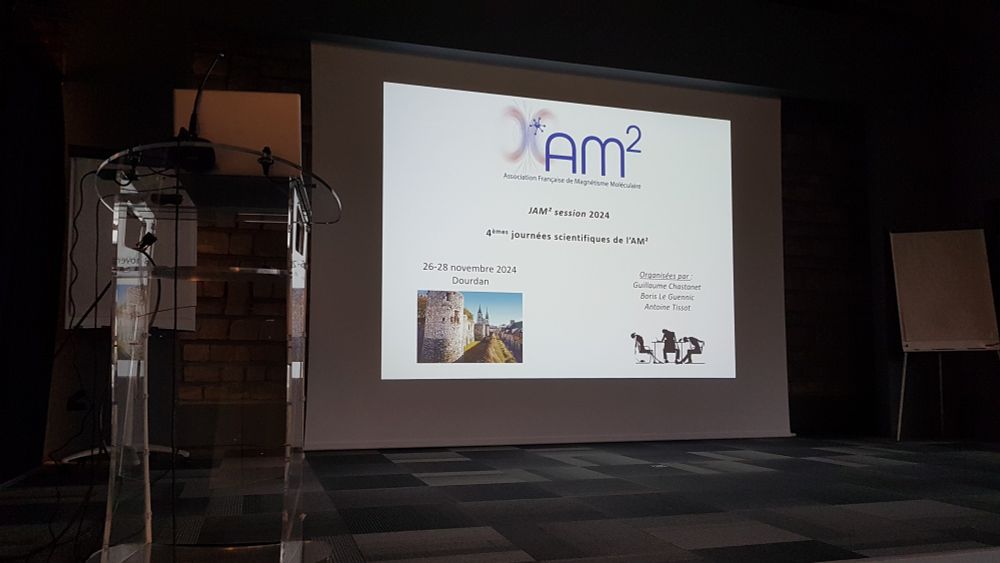
Poet & musician guillaumechastanet.fr/
Head of the Switchable Molecules & Materials group @switchmm-group.bsky.social
President of the french association of molecular magnetism https://asso-am2.fr
@icmcb.bsky.social
pubs.rsc.org/en/content/a...

@icmcb.bsky.social
pubs.rsc.org/en/content/a...

pubs.rsc.org/en/content/a...



#ChemSky
pubs.acs.org/doi/10.1021/...

Have a look here : emploi.cnrs.fr/Offres/Docto...
@icmcb.bsky.social
Have a look here : emploi.cnrs.fr/Offres/Docto...
@icmcb.bsky.social
abg.asso.fr/fr/candidatOff…
@icmcb.bsky.social @univbordeaux.bsky.social
abg.asso.fr/fr/candidatOff…
@icmcb.bsky.social @univbordeaux.bsky.social
Only a few days left for those who have not yet submitted abstracts
icmm2025.sciencesconf.org
@icmcb.bsky.social @cnrs.fr @univbordeaux.bsky.social cleracr.bsky.social
Only a few days left for those who have not yet submitted abstracts
icmm2025.sciencesconf.org
@icmcb.bsky.social @cnrs.fr @univbordeaux.bsky.social cleracr.bsky.social
➡️https://icmm2025.sciencesconf.org
@cnrs.fr @univbordeaux.bsky.social #BordeauxINP

@icmcb.bsky.social @univbordeaux.bsky.social @cnrs.fr @cnrsaquitaine.bsky.social
www.gazettelabo.fr/titres/index...
@icmcb.bsky.social @univbordeaux.bsky.social @cnrs.fr @cnrsaquitaine.bsky.social
www.gazettelabo.fr/titres/index...



Thanks to Sri for the picture.

Thanks to Sri for the picture.

asso-am2.fr

asso-am2.fr
"OctaDist is computer software for crystallography and inorganic chemistry program. It is mainly used for computing distortion parameters of coordination..."
#FiveStepsOfWikipedia #WhereNext
🧵 2/7
https://en.wikipedia.org/wiki/OctaDist

"OctaDist is computer software for crystallography and inorganic chemistry program. It is mainly used for computing distortion parameters of coordination..."
#FiveStepsOfWikipedia #WhereNext
🧵 2/7
https://en.wikipedia.org/wiki/OctaDist
inc.cnrs.fr/fr/cnrsinfo/...

inc.cnrs.fr/fr/cnrsinfo/...


